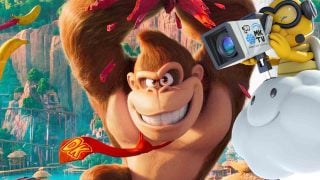Super Mario 64 is 20 years old today. For those of us who experienced this game during our childhood or adolescence, that fact might seem a little too hard to believe. Nevertheless, we look back fondly at Super Mario 64 for the hours of fun it gave us and as a revolutionary game that helped usher in the age of 3D gaming in the 1990s.
The revolution of the 3D camera
One of the most important concepts to come out of Super Mario 64 was its camera; how the players would see themselves in the game space. It was the first game to have a camera that was controlled independently of the character. In other words, the camera would adjust itself depending on how Mario was moving through the level and what was on screen. This may not sound like a big deal now since independently controlled 3D cameras are the norm for most 3D platformers today, but back then it was a completely different story. Taking a concept for a game that was designed on a 2D plane into a 3D space while trying to keep the gameplay familiar and fun is an extremely difficult task. The Sonic the Hedgehog series is the prime example of how challenging this task can be – the series struggled early on in its 3D jump with titles like Sonic 3D blast, Sonic R, and even the Sonic Adventure series, all of which were criticized for their camera controls.

According to an interview with Giles Goddard, a Nintendo coder who worked on Super Mario 64, even Shigeru Miyamoto wasn’t sure how the camera should work in 3D.
“Miyamoto wasn’t sure how to control the camera in 3D as he hadn’t worked with them before, so it went through various stages… I think this probably went through 1000s of different systems – having it locked, having it moving, having it locked again, player could control it 100%, etc.”
Eventually, they created a camera system that they were happy with, and they even thought of a neat little way to explain the automatic changing camera position: Lakitu. If you were to find a mirror during your adventure, you would be able to see Lakitu following Mario around with a camera! A pretty cool idea in my book. Nevertheless, this automatic camera concept inspired many other developers to implement similar systems into their games.

Although the camera system in Super Mario 64 was a great innovation at the time, it has aged considerably when compared to more modern games. The camera can be frustrating and uncooperative to work with, and let’s face it: it can be kind of annoying. However, that’s only a testament to how far games have come today. In a way, it’s an interesting experience to go back to the games you played as a child and realize how poorly they’ve aged. I personally think that if you don’t feel that sense of age when you compare Super Mario 64 to Super Mario Galaxy, then the series hasn’t improved at all. Even though the two games have a similar play style, they can still feel vastly different, and that can help you appreciate the difference something as small as a 3D camera can make.
A legacy
Super Mario 64 has served as an inspiration to 3D games since its release. One of the designers of Conker’s Bad Fur Day reflected on his game’s inspiration during a director’s commentary of the game by saying, “We were just copying Mario, weren’t we?” He then later states that it’s still the best 3D camera. Tetsuya Nomura said in an interview that Super Mario 64 was his main inspiration when creating Kingdom Hearts. Super Mario 64 even lent some inspiration to Grand Theft Auto, as Rockstar’s Dan Houser claimed that, “Anyone who makes 3D games who says they’ve not borrowed something from Mario or Zelda is lying.”
It’s clear that Super Mario 64 has left a lasting impression on the game industry, and many games created today can trace some of their inspiration back to this revolutionary title, undoubtedly making the title one of the most memorable and enriching games of that generation.
Leave a Comment

